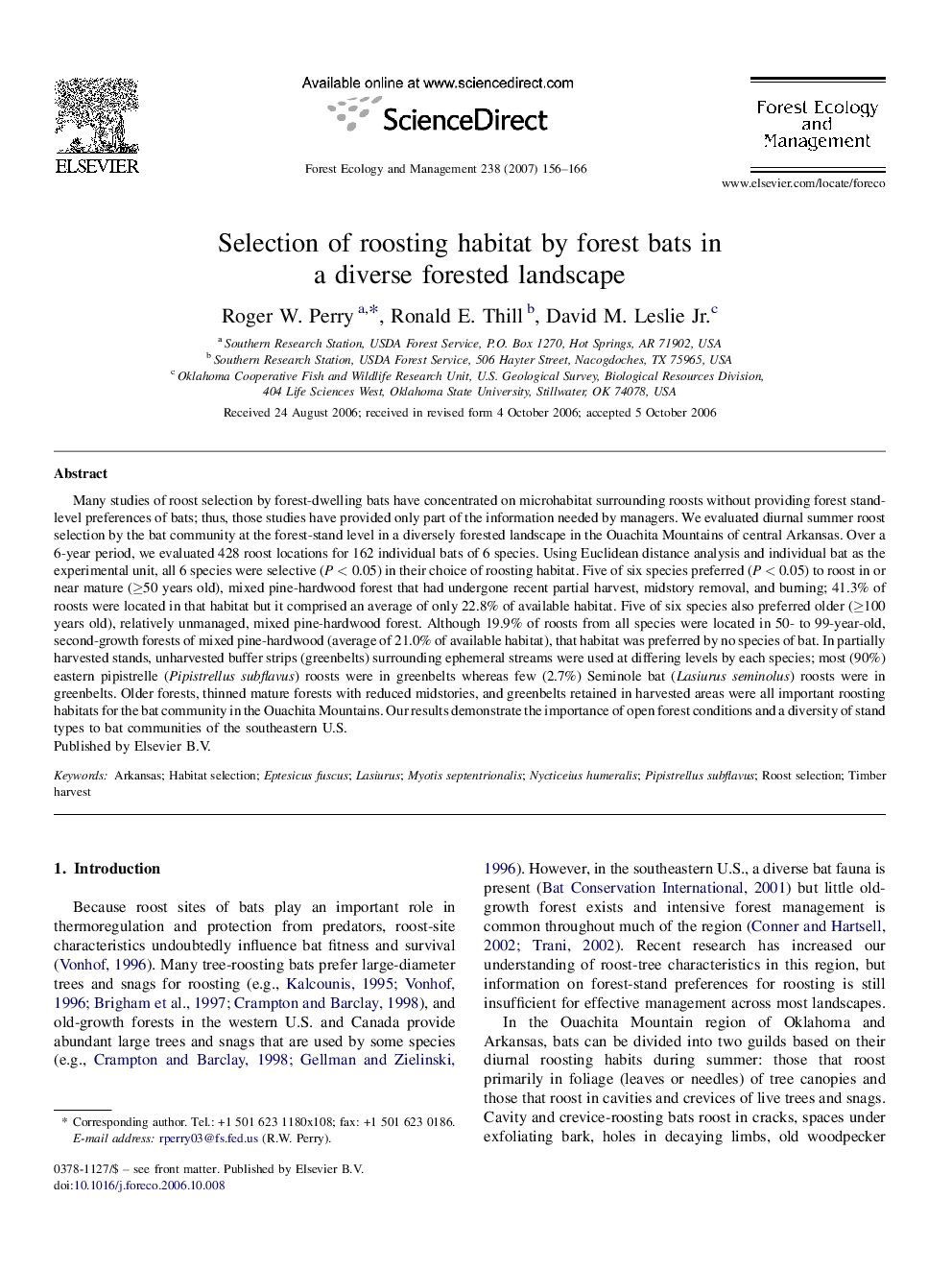| کد مقاله | کد نشریه | سال انتشار | مقاله انگلیسی | نسخه تمام متن |
|---|---|---|---|---|
| 90246 | 159374 | 2007 | 11 صفحه PDF | دانلود رایگان |

Many studies of roost selection by forest-dwelling bats have concentrated on microhabitat surrounding roosts without providing forest stand-level preferences of bats; thus, those studies have provided only part of the information needed by managers. We evaluated diurnal summer roost selection by the bat community at the forest-stand level in a diversely forested landscape in the Ouachita Mountains of central Arkansas. Over a 6-year period, we evaluated 428 roost locations for 162 individual bats of 6 species. Using Euclidean distance analysis and individual bat as the experimental unit, all 6 species were selective (P < 0.05) in their choice of roosting habitat. Five of six species preferred (P < 0.05) to roost in or near mature (≥50 years old), mixed pine-hardwood forest that had undergone recent partial harvest, midstory removal, and burning; 41.3% of roosts were located in that habitat but it comprised an average of only 22.8% of available habitat. Five of six species also preferred older (≥100 years old), relatively unmanaged, mixed pine-hardwood forest. Although 19.9% of roosts from all species were located in 50- to 99-year-old, second-growth forests of mixed pine-hardwood (average of 21.0% of available habitat), that habitat was preferred by no species of bat. In partially harvested stands, unharvested buffer strips (greenbelts) surrounding ephemeral streams were used at differing levels by each species; most (90%) eastern pipistrelle (Pipistrellus subflavus) roosts were in greenbelts whereas few (2.7%) Seminole bat (Lasiurus seminolus) roosts were in greenbelts. Older forests, thinned mature forests with reduced midstories, and greenbelts retained in harvested areas were all important roosting habitats for the bat community in the Ouachita Mountains. Our results demonstrate the importance of open forest conditions and a diversity of stand types to bat communities of the southeastern U.S.
Journal: Forest Ecology and Management - Volume 238, Issues 1–3, 30 January 2007, Pages 156–166